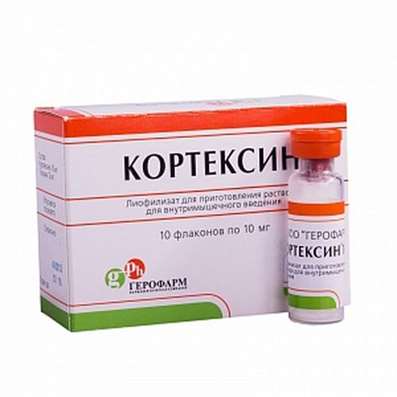Cerebrolysin at Stroke
04 Feb 2017
What is Stroke?
A stroke happens when the blood supply to part of the brain is suddenly interrupted (ischemic stroke - about 80% of cases) or when a blood vessel in the brain bursts, spilling blood into the spaces surrounding brain cells (hemorrhagic stroke - about 20% of cases). Shortages of oxygen and nutrients lead to the brain cells death. Although stroke is a disorder of the brain, it can affect the entire body. A common disability that results from stroke is complete paralysis on one side of the body, called hemiplegia. A related disability that is not as debilitating as paralysis is one-sided weakness or hemiparesis.
Stroke may cause problems with thinking, awareness, attention, learning, judgment, and memory; sudden trouble with walking, dizziness, or loss of balance or coordination; or sudden severe headache with no known cause.
Stroke survivors often have problems understanding or forming speech.
A stroke can lead to emotional problems.
Stroke patients may have difficulty controlling their emotions or may express inappropriate emotions.
Many stroke patients experience depression. Stroke survivors may also have numbness or strange sensations.
There are three treatment stages for stroke: prevention, therapy immediately after the stroke, and post-stroke rehabilitation. Therapies to prevent a first or recurrent stroke are based on treating an individual's underlying risk factors for stroke, such as hypertension, atrial fibrillation, or diabetes. Acute stroke therapies try to stop a stroke while it is happening by quickly dissolving the blood clot causing an ischemic stroke or by stopping the bleeding of a hemorrhagic stroke. Post-stroke rehabilitation helps individuals overcome impairments and disabilities that result from brain tissue damage.
Cerebrolysin belongs to agents with neuroprotection and neurorecovery functions used in the acute phase and post-stroke rehabilitation and it is recommended that its administration should be initiated as early as possible, usually within a few hours post-stroke. Beneficial results were shown in many studies.
Cerebrolysin - Clinical efficacy and patient benefits
Treatment of stroke with Cerebrolysin helps to regain independence. Its efficacy has been proven in 36 double-blind-studies and trials with more than 5.000 patients.
Below please find the most important studies of the last years and their key results.
Cerebrolysin improves motor functions and activities of daily living.
Cerebrolysin accelerates recovery pattern in cognitive, motor and ADL domains.
Faster recovery for patients treated with standard therapy (rtPA) combined with Cerebrolysin.
Cerebrolysin decreases mortality rate.
Cerebrolysin Dosage recommendation Stroke
Cerebrolysin belongs to agents used in post-stroke rehabilitation and it is recommended that its administration should be initiated as early as possible, usually within a few hours post-stroke. The recommended dosage range is between 20 and 50 ml per day. For the treatment of stroke Cerebrolysin should be used as an add-on treatment to standard intervention.
Disorder - Stroke
Daily dosage 20 - 50 ml of Cerebrolysin
Initiation of treatment as soon as possible
Duration of treatment - 10 - 21 days
ROUTE OF ADMINISTRATION
IV infusion - 10ml - 50ml of Cerebrolysin, diluted to at least 100ml, total volume with Saline, Ringer solution or 5% glucose solution. Infuse within 15 minutes.
To guarantee sterility, always use disposable one-way infusion sets and cannulas!
Do not store the infusion solution, start the infusion as quickly as possibe after dilution!
Cerebrolysin should not be mixed with balanced amino acid solutions, vitamins and cardiovascular medicinal products.
STERILITY ASPECTS
Special precautions to guarantee sterility must be taken during dilution and administration of Cerebrolysin:
Remove solution from ampoules immediately before use
Do not leave an open ampoule on the treatment table
Always use only disposable one-way IV infusions sets and cannulas
When Cerebrolysin is administered via a long-term IV catheter, the catheter has to be rinsed before and after the application with physiological sodium chloride solution.

 Cart
Cart





